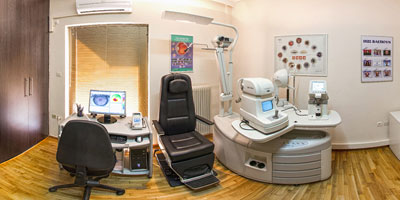Conjunctivitis
The term conjunctivitis is used to define inflammation of the conjunctiva (the white membrane of the eye). This is a group of diseases whose main characteristic is a red irritated eye. The accompanying symptoms can vary.
Pathogenesis - Clinical picture
Conjunctivitis is an inflammation of the conjunctiva which is characterized by vasodilation (redness of the eye) and oedema. Depending on how long the inflammation lasts, we distinguish between chronic and acute conjunctivitis. Thus a chronic conjunctivitis lasts more than 3 weeks. The symptoms of acute conjunctivitis are usually more severe than chronic.
They are divided into infectious and non-infectious depending on whether or not a microorganism (bacterium, virus, fungus, parasite) is responsible for its occurrence. Infectious conjunctivitis is mainly characterized by a pus secretion of the eyes, ie the stickiness which is continuous and usually abundant, especially in bacterial conjunctivitis. In contrast, when the secretion is small and transparent then we are most likely dealing with a non-infectious conjunctivitis. Non-infectious conjunctivitis is divided into allergic and dry (due to lack of tears). Allergies are caused by the reaction of the eyes to a factor that irritates our immune system. We usually suffer from intense itching and the eyelids often become swollen (oedema). It may be due to the environment and usually affects both our eyes or it may be due to local causes (eye drops, ointments, makeup, contact lenses, etc.)
Many times, in parallel with the conjunctival infection, the cornea (the transparent membrane of the eye) is also affected, resulting in the so-called corneal conjunctivitis. This is more common in viral infections, the symptoms are more severe and can cause vision impairment if the centre of the cornea is affected. The most severe forms of this kind are epidemic corneal conjunctivitis (caused by adenoviruses) and herpetic corneal conjunctivitis (caused by the herpes virus).
Symptoms
What we feel when we have conjunctivitis varies depending on its form. The most common symptoms are stinging, foreign body sensation, transient blurred vision that clears when you open and close your eyes, itching and in some cases pain.
Treatment and advice
Before talking about treatment, we should emphasize that under no circumstances should you use eye drops without the advice of an ophthalmologist and especially when you do not know what each eye drop is for. In pharmacies, of course, some antiseptics and vasoconstrictors are sold for mild cases that can be used with caution as the first treatment of symptoms. Cold tap water can be used abundantly and soothes effectively. If symptoms persist the best advice is to visit your ophthalmologist.
What you need to know is that bacterial conjunctivitis is treated with antibiotic eye drops and the duration of treatment is from one to two weeks and continues if so indicaticated and the doctor so decides.
Viral conjunctivitis, like all viruses, does not have a specific treatment that fights the cause. An exception is the herpes virus for which we have a specific drug for its treatment but it is only given once the specific virus is diagnosed. For the rest, non-herpetic, conjunctivitis and corneal conjunctivitis, they will need to run their cycle but the treatment will help reduce the symptoms. Usually combination eye drops are given that contain antibiotics and cortisone, but these are given only by the doctor and if herpetic conjunctivitis is ruled out because cortisone causes aggravation of the disease!
Finally, dry conjunctivitis is treated mainly with artificial tears while allergic ones are relieved with antihistamines and cortisone, always of course under medical advice and monitoring.

